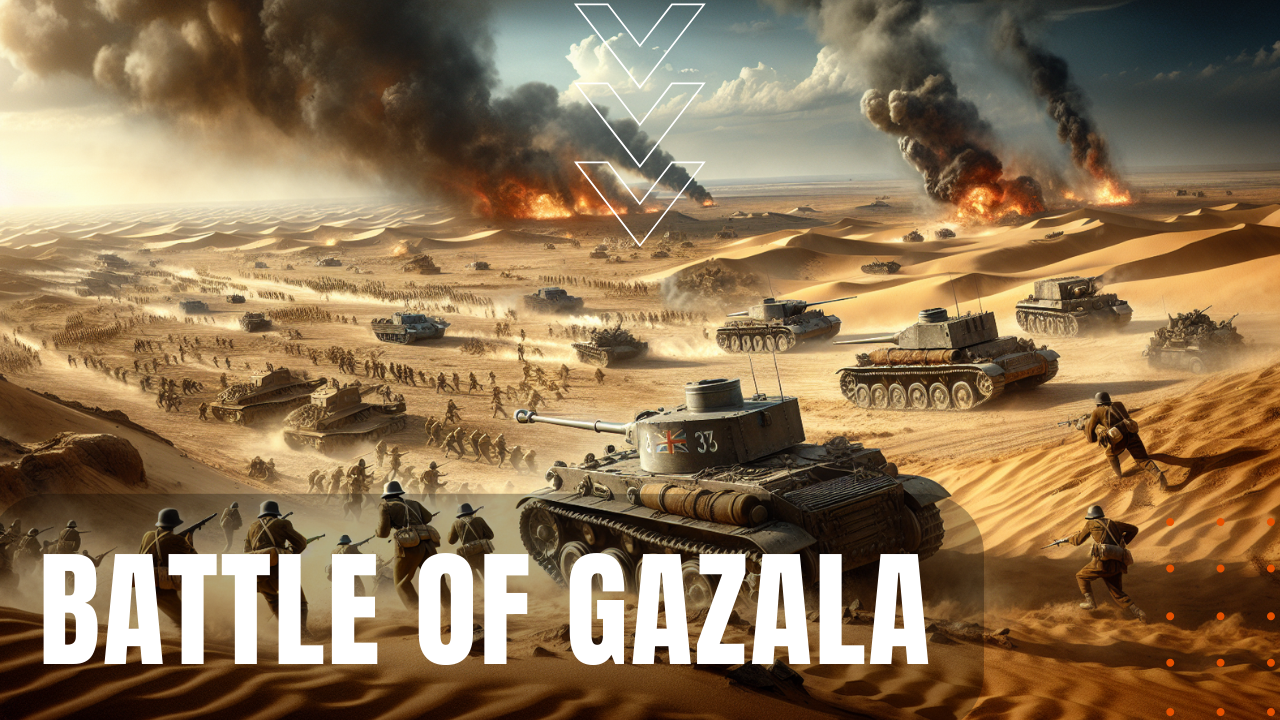The Battle of Gazala

By the spring of 1942, the Germans and their Italian allies had been locked in a back-and-forth battle against the British for the control of North Africa, ever since Italian dictator Benito Mussolini attacked British-held bases in Egypt two years prior. Mussolini’s offensive ended in a rout for the Italians, who clearly bit off more than they could chew, prompting Adolf Hitler to dispatch Erwin Rommel and his Afrika Korps to fortify the Italians in February of 1941. Rommel’s challenge was formidable from the onset of his arrival, since the British Eighth Army was dug in along a 40-mile defensive front known as the Gazala line—so named for a town along the Mediterranean coast—where the British had set up strong points known as boxes from Gazala in the north to Bir Hacheim to the south.
Desert Fox
Known as the Desert Fox for his bold strategies and Blitzkrieg style offensives, on May 26th, 1942, Rommel devised a feint maneuver against the British along the Gazala line, sending German General Cruewell and his allied troops against British forces on the left, while the main, three-component strike force of the Panzerarmee Afrika attacked from the right, with Rommel commanding from the front. Led by commanding General Claude Auchinleck and his second in command, Gen. Neil Ritchie, at 9:00 PM on a moonlit, cool desert landscape, Rommel’s 10,000 vehicle army attacked the Gazala line with fearsome intensity, and while the first three hours proved successful for Rommel, his troops were soon overwhelmed by Britain’s latest surprise weapon, the American-built Grant M3 tank—a buildup of firepower that went undetected by German intelligence.
From Defeat to Victory
As a result, the Panzerarmee Afrika took a beating at Britain’s Knightsbridge box, forcing the 15th Panzer division to run out of gas due to failing German supply lines. Regrouping yet again, Rommel’s forces encircled a significant portion of the British Eighth Army in a move now referred to as the “Cauldron” or “Gazala Gallop,” and while Auchinleck’s forces were able to break the German’s encirclement at heavy cost to both sides, the battle ended inconclusively, exposing Auchinleck to criticism when he failed to pursue Rommel’s badly weakened Afrika Korps. The battle also forced the British to abandon Gazala in a fall back move to El Alamein, while the battle also forced both side to re-examine their supply lines and overall logistical strategies, making the Battle of Gazala, a study in Allied resilience in the face of brutal adversity.
